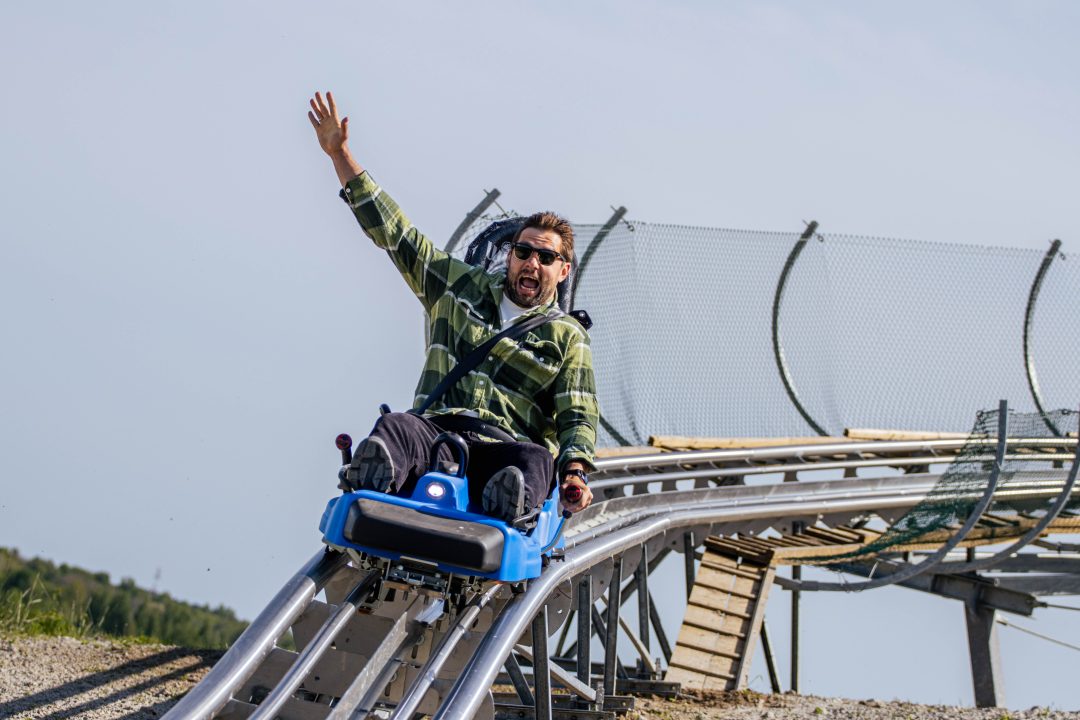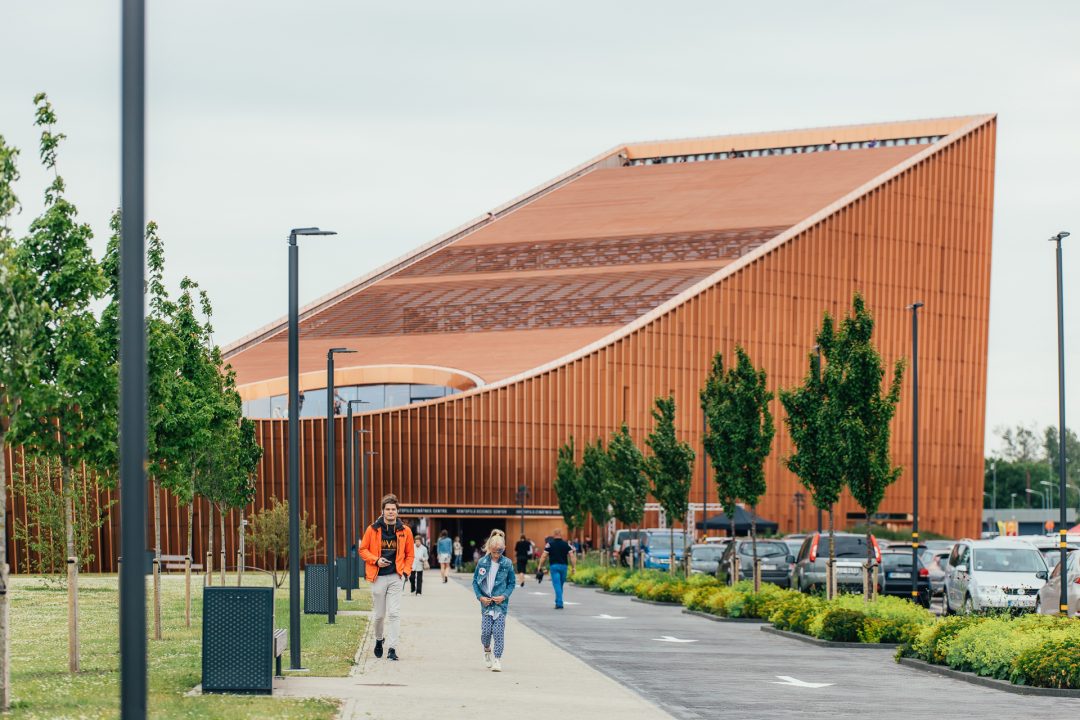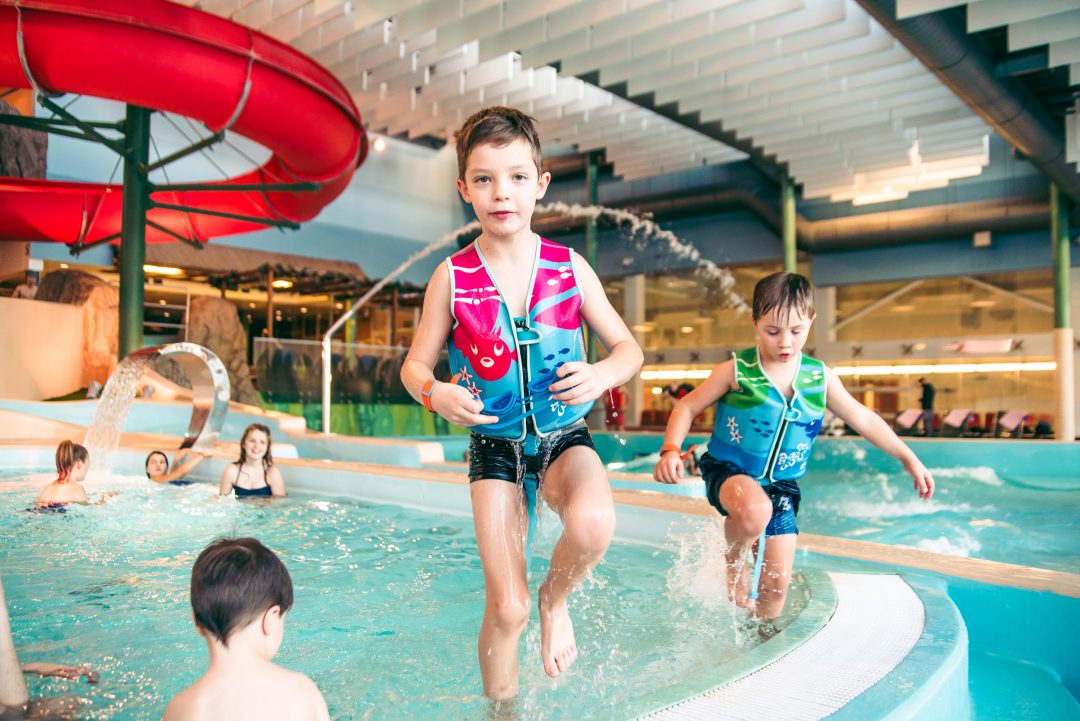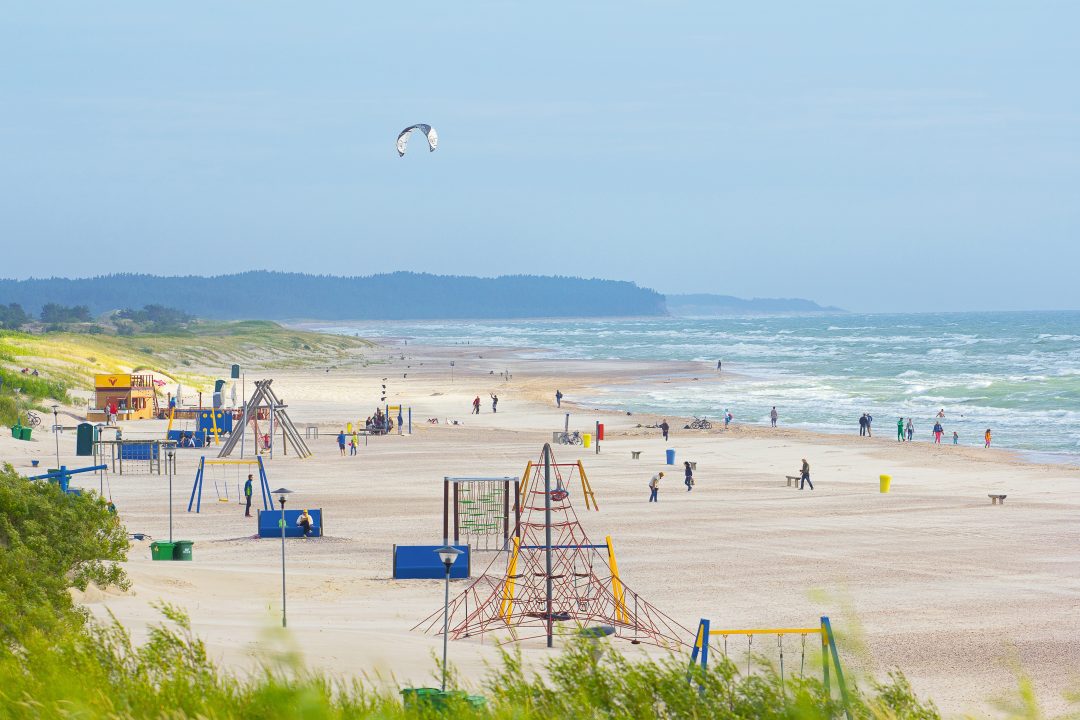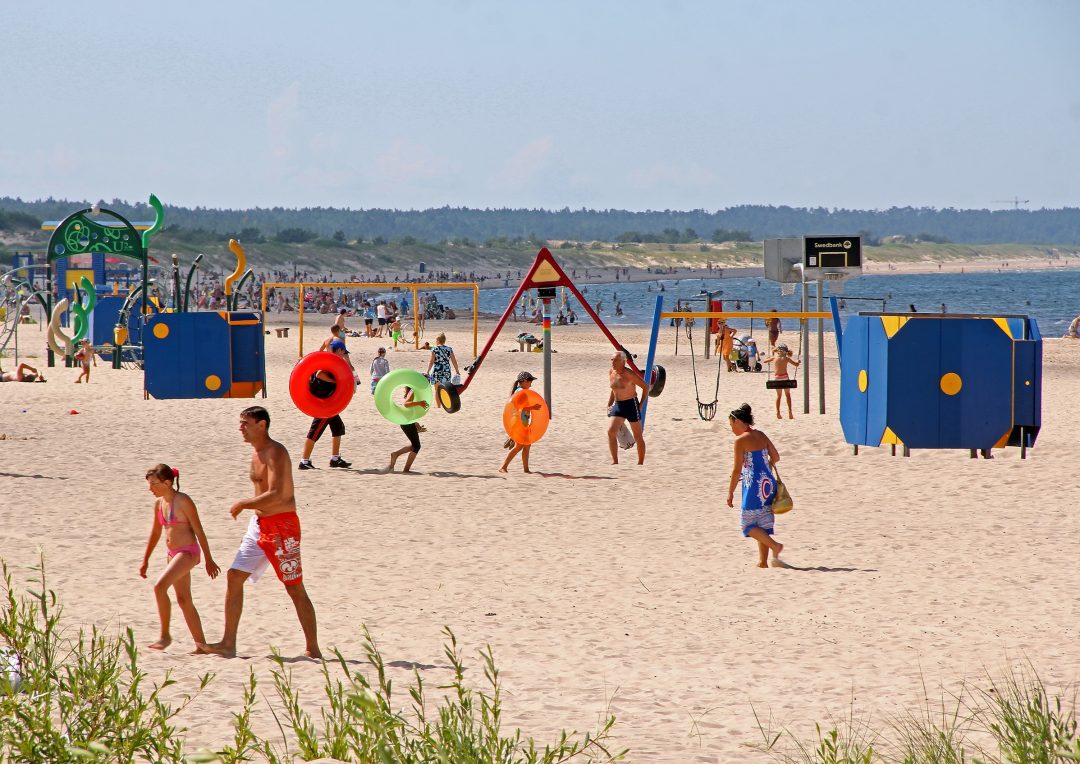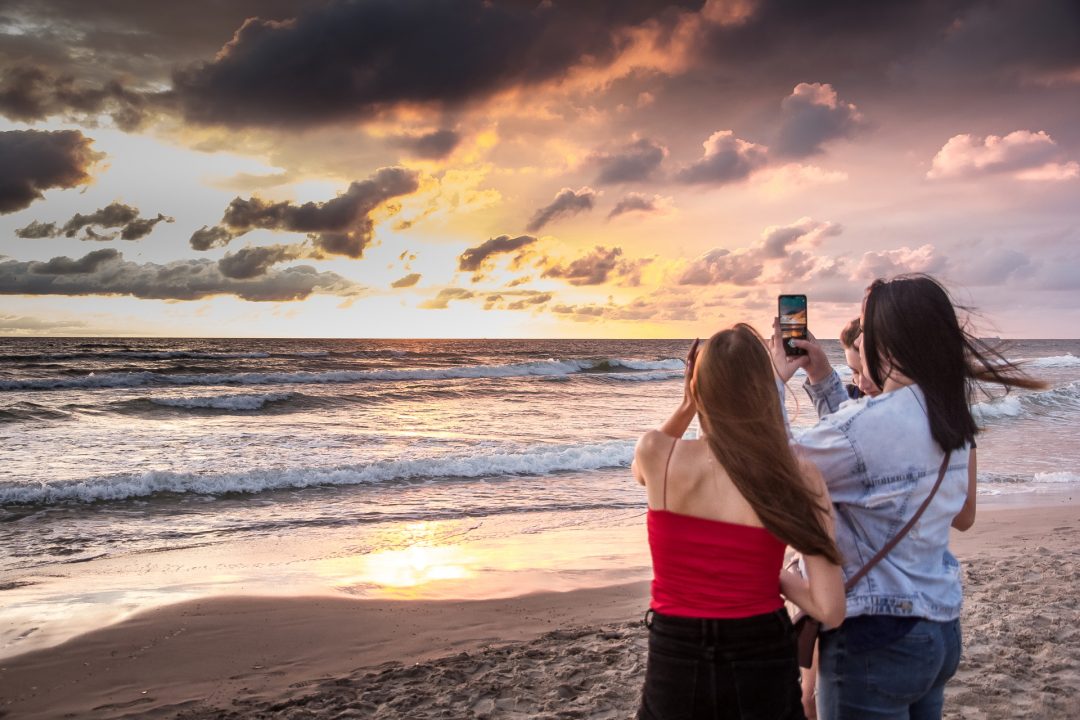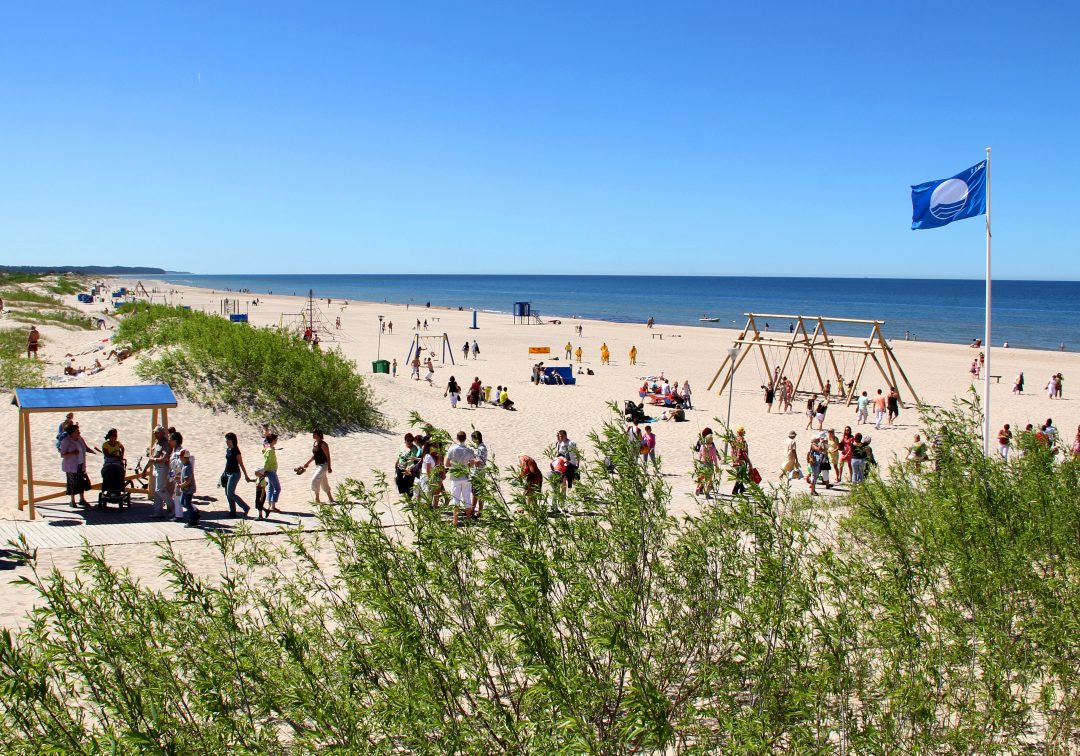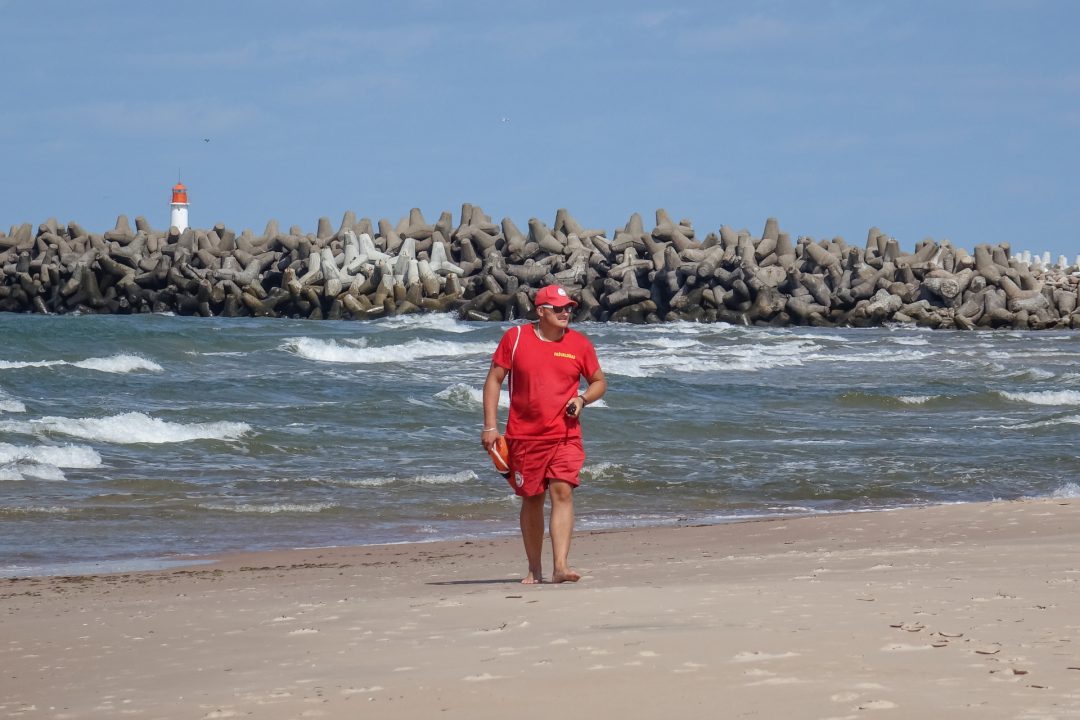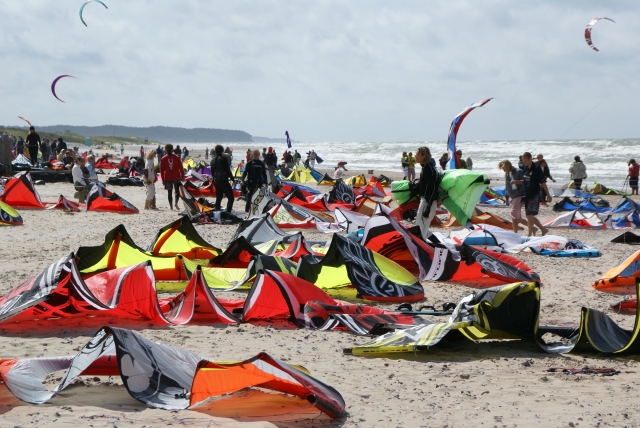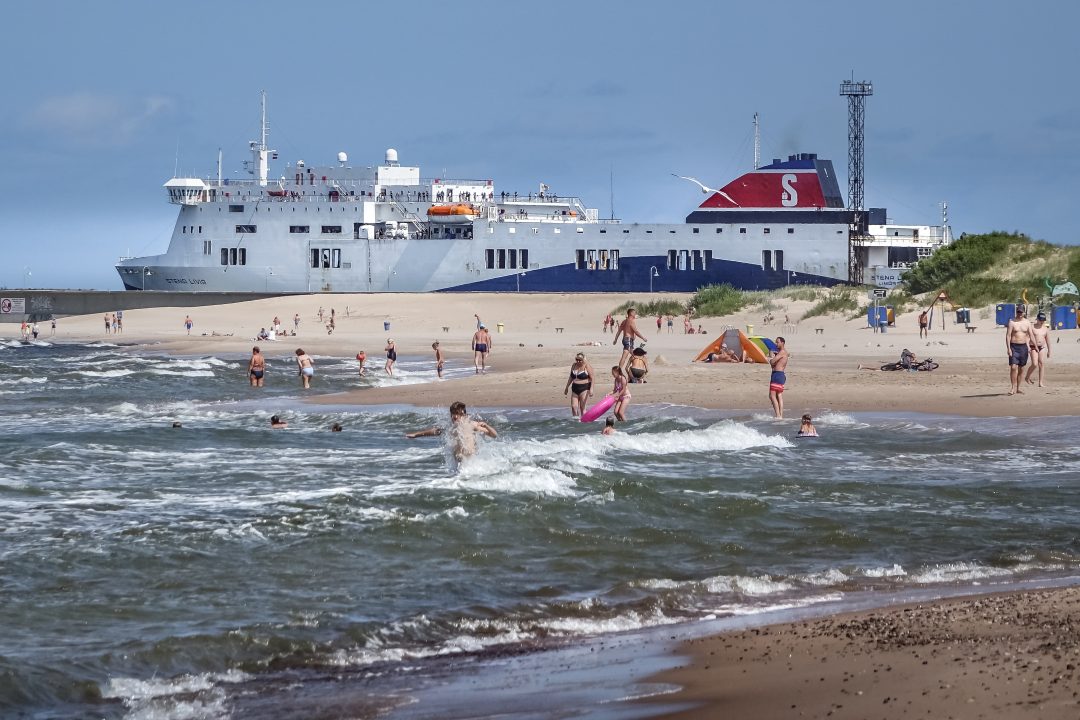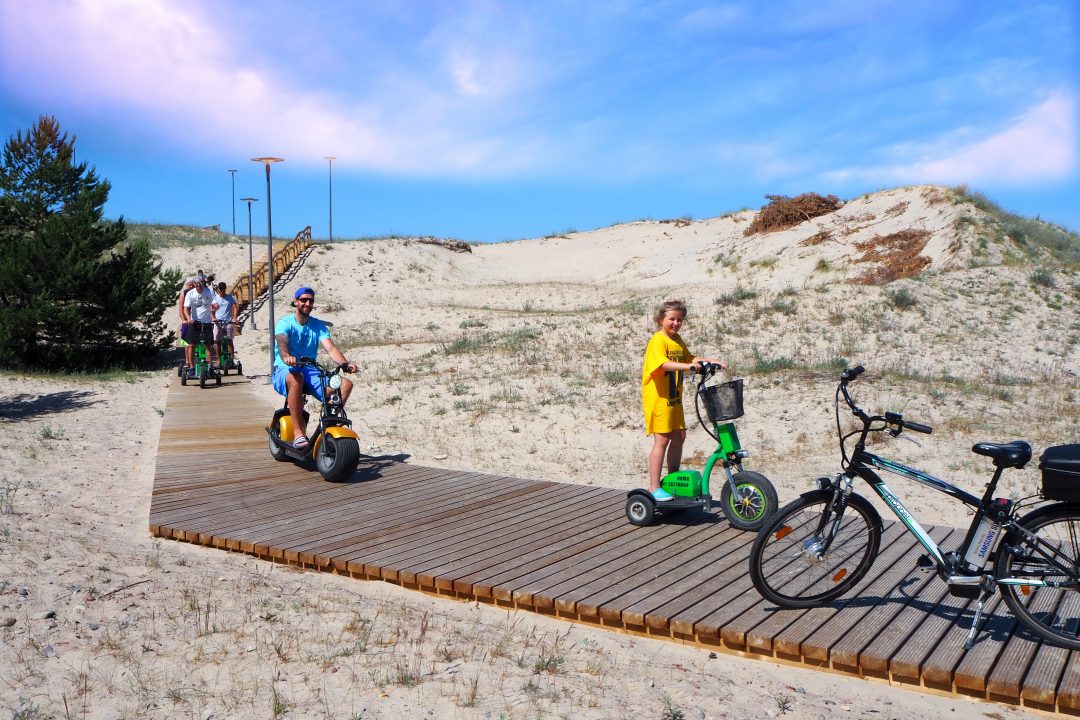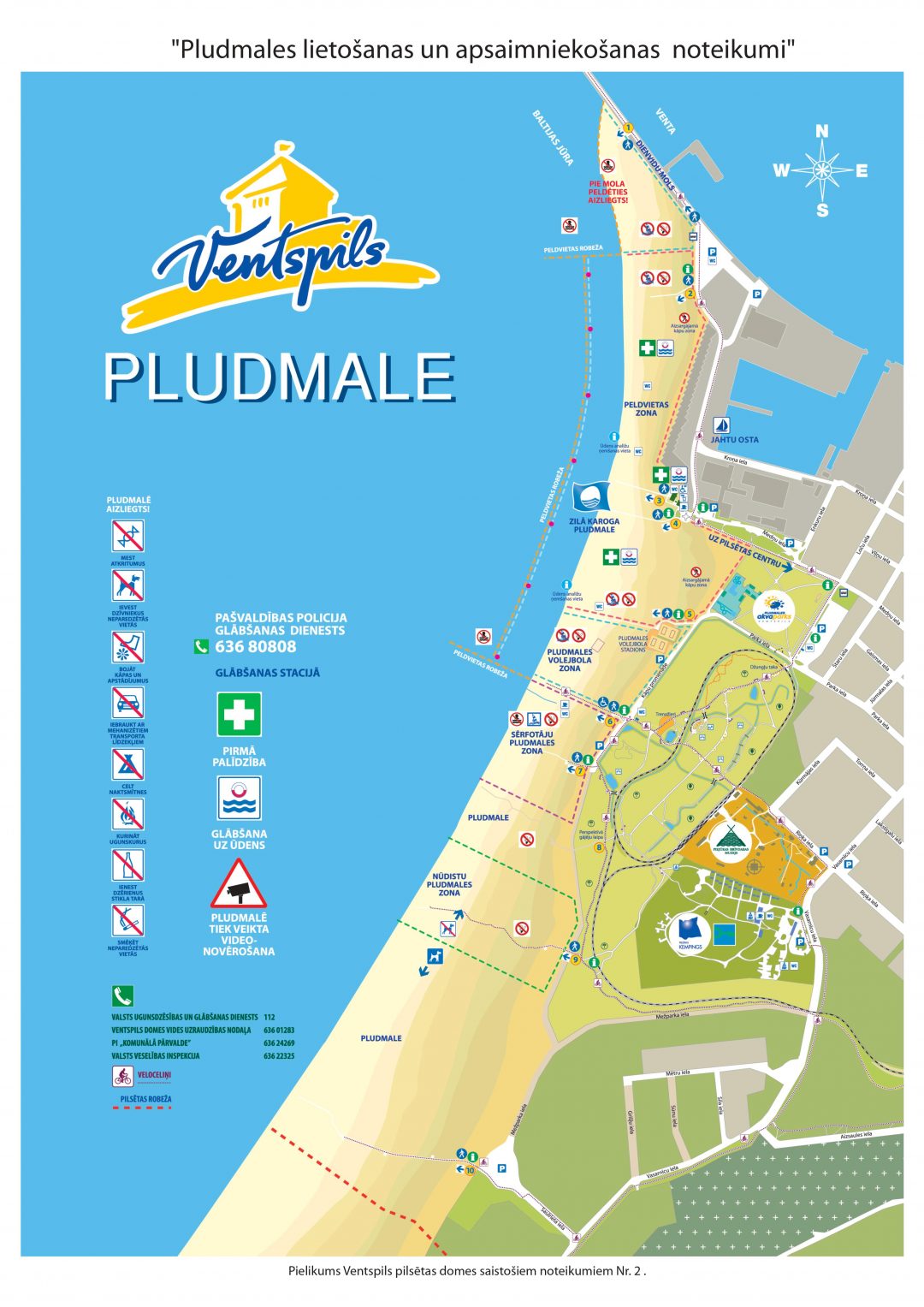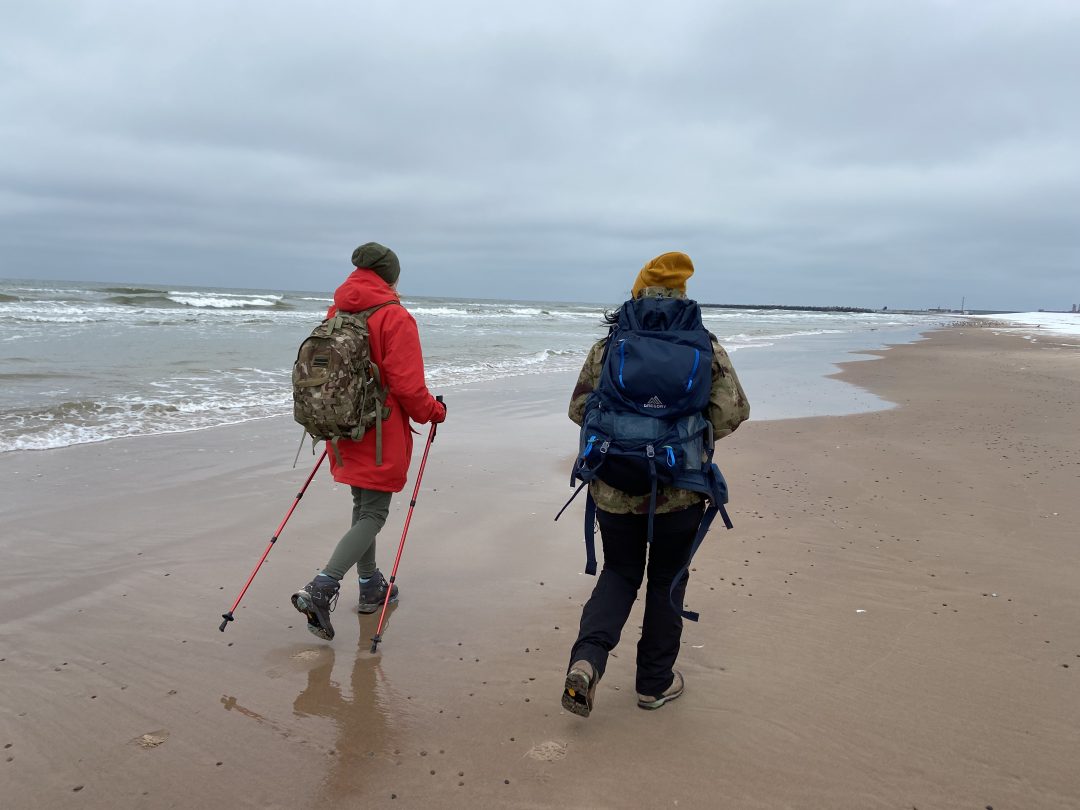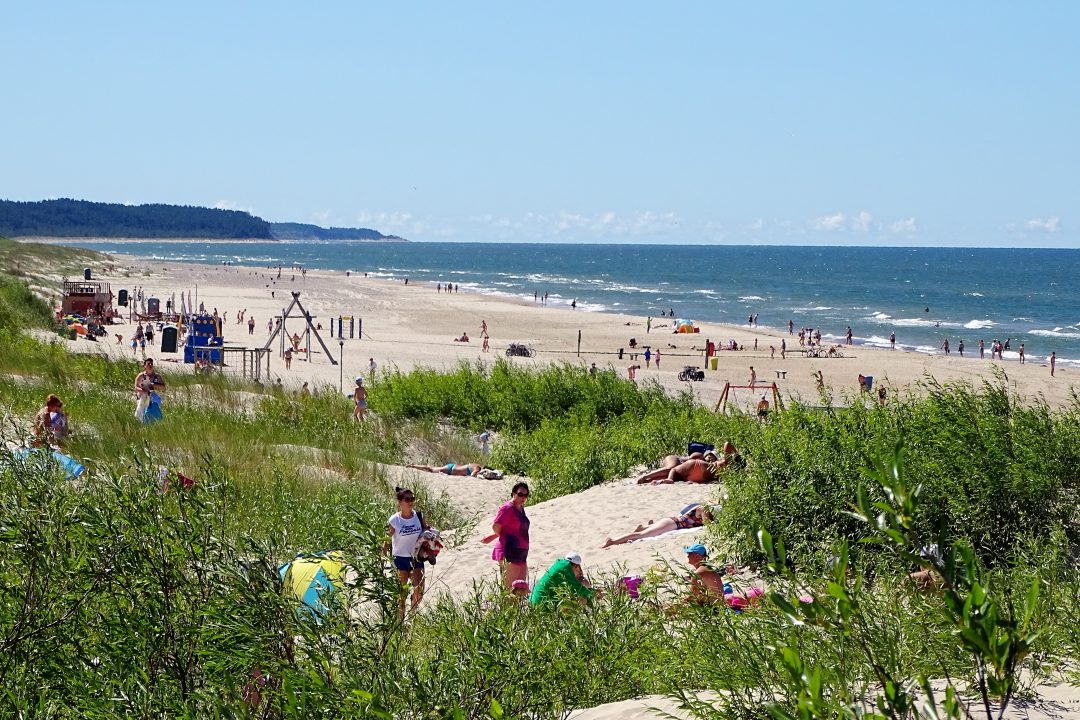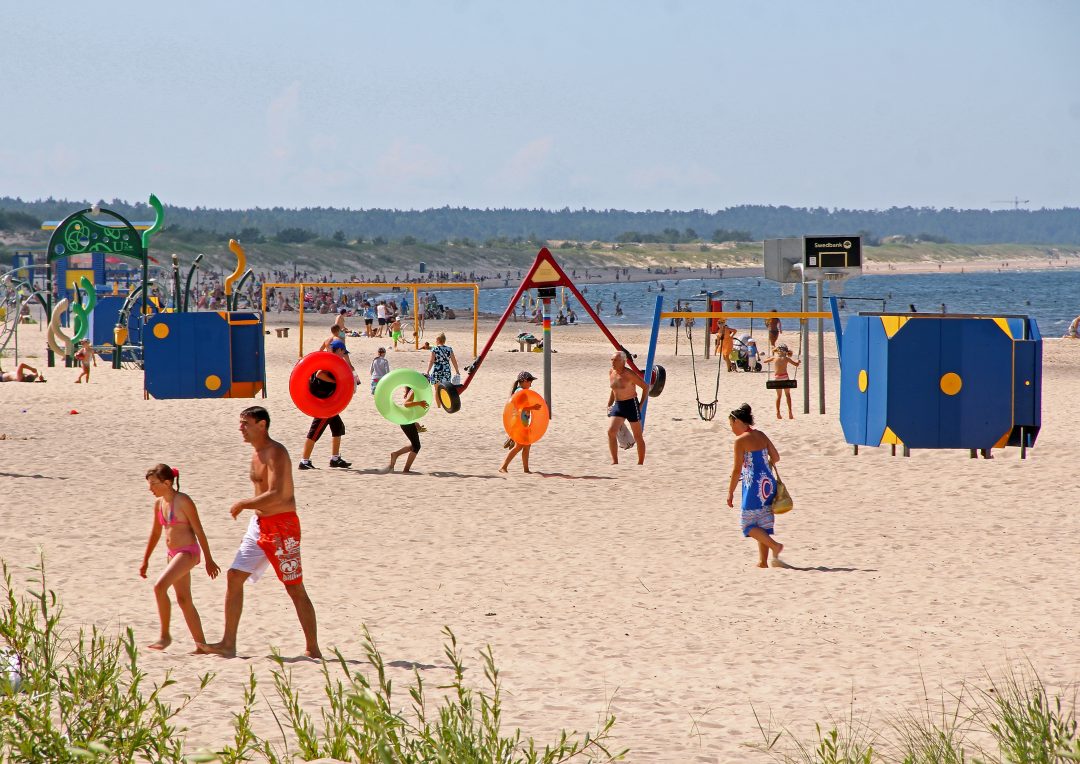The Blue Flag has been raised on the beach of Ventspils during the bathing season since 1999. Raising the Blue Flag means that the sea water complies with international environmental quality standards and the beach is fully developed and well-maintained:
- The beach is accessible only over the footbridges.
- At each footbridge, there is a plate indicating the number of the footbridge, the water temperature and whether or not the swimming is allowed.
- The most significant one is the footbridge No. 4, which is the central footbridge enabling the access to the beach.
- There is an information panel on the beach side, containing information on the Blue Flag, the map of the beach and its surroundings, bathing water test results, as well as the rules of the beach, layout of the water rescue equipment and explanation of warning signs.
- You should pay attention to things you are allowed and things you are not allowed to do on the beach, e.g., using alcohol, smoking or bringing alcoholic drinks in glass bottlers is not allowed. Also, no pets are allowed on the beach.
- With health of the vacationers in mind, smoking is forbidden in most areas of the Blue Flag beach. Special properly labelled rubbish bins are placed in those areas, where smoking is permitted.
This beach with its white, fine sand has a nearly 80 m wide seashore and dunes, the height of which, in some places, may reach up to 9 m. The Blue Flag beach has a total length of 1.2 km. The beach equipment is also suitable for persons with reduced mobility, as they are able to access the beach, using the footbridges and staying on special platforms.
The large dunes surrounding the beach of Ventspils tend to create natural “sun baths”, which provide a shelter from wind and allow to open the sunbathing season earlier than elsewhere.
During the summer season, everyone can use the volleyball and football fields or relax in cafes.
KIDS
Children can try out different playground equipment, slides and swings.
How safe is the beach for children?
After experiencing cases, where young children disappear from the sight of their parents on the beach and, due to confusion, they are no longer able to find their way back within the large beach area, there is a sticker of an easily recognizable animal on each entrance stand, which allows a child to be aware of his location, in case he gets lost. At the entrance, the parents should show their children these drawings.
At each entrance, you will see an image of an animal: entrance No. 1 – a rabbit; entrance No. 2 – a cat; entrance No. 3 – a fox; entrance No. 4 – a bear; entrance No. 5 – a lion; entrance No. 6 – a hedgehog.
What should the parents remember when going to the beach together with their children?
The parents can always ask for help from the rescue service workers, who are on duty the entire day.
Children should wear inflatable swimming arm bands in bright colours, while being near water, thus helping them stay afloat. Moreover, the child will be easily recognizable among others.
The child should be told what to do in case of getting lost, assuring that the rescue service base is the safest place to go, which will also be the first place the parents will turn to. If there is no rescue service on the beach, you can agree on another well visible place where the child can go and wait for his parents in case of getting lost.
What should the parents remember about the child’s safety on the water?
Never leave your child alone in the water. The parents must always be present, as the child may easily go under the water.
Never leave the child alone floating in a swim ring or on an air mattress. The waves may turn over the swim ring, and it is unlikely that the child will be able to turn it around by himself, but a mattress can be drifted further into the sea.
Never choose your place of staying near the volleyball court.
In order to ensure maximum physical safety of the child, the beach should be visited only under the supervision of adults.
In case of witnessing a situation, where the life of a child or an adult is in danger, we urge the visitors of the beach not to remain indifferent and immediately seek for help and inform the Ventspils Municipality Police, calling 63680808 or 28680808.
LIFEGUARDS
There is also a professional lifeguard service on the beach of Ventspils
- During the entire bathing season from 15 May to 15 September, from 10 a.m. to 10 p.m., lifeguards are on the duty on the beach, ready to help people in distress. However, always remember to keep yourself and your children safe!
What do the red-yellow flags at the lifeguard towers mean?They show the supervised area of the beach in accordance with the standard set by the International Life Saving Federation.
- A red over yellow flag: swimming allowed.
- A yellow over red flag: no swimming allowed.
- A red over yellow flag together with a yellow flag: dangerous to swim.
- The sea is sometimes deceitful, and on hot summer days, you might see the sign “No swimming allowed”. The cold northern currents may bring very cold water (even 4 to 5oC in the middle of July). Hitting the cold water in hot weather may cause the cold-water shock, which can be lethal. Therefore, if you see the sign “No swimming allowed” or “Dangerous to swim” and the respective flags, it really means that swimming is not allowed.
Do I really have to pay attention to the flags?
The signs set up at each footbridge that enable the access to the beach indicate whether or not the swimming is allowed. They also indicate the water temperature and text on the background of the respective colour: green background with the text “Swimming allowed”, yellow background with the text “Dangerous to swim” or a red background with the text “No swimming allowed”. The sign “No swimming allowed” means that you are not allowed to go into the water due to a specific reason, usually due to severe weather. The sign “Dangerous to swim”, on the other hand, means that swimming is allowed, but the Rescue Service warns you that you should be extra careful, usually due to high waves and currents, which may drag you under the water. Therefore, special care should be taken.
An observation tower (19 m above sea level) has been constructed next to the beach at the Southern pier. The beach also offers a separate area for nudists and a well-maintained and fully equipped surfing beach with a total length of 500 m, equipped with appropriate equipment to prepare, store and dry the surf gear.
SOUTH PIER
Is it safe to swim at the pier? Approximately 100 m from the southern pier, there is a sign indicating that swimming further is not allowed. This warning is also displayed in several languages directly on the wall of the pier. Swimming here is dangerous even in calm weather, as the water currents hit against the pier, creating whirlpools, and not even the best swimmers might be able to get out of them. Therefore, no swimming is allowed here.
The beach area is very large. How do I find the way through it?
The beach can be accessed over footbridges, which are numbered. For instance, No. 4 is indicated at the central entrance at the end of the street Medņu iela. Also, the corresponding number of circles is indicated on the changing cabins, located on both sides of the footbridge No. 4 – four yellow circles, which facilitates moving around the beach not only for children, but also for adults. Thus, a meeting can be set at one specific footbridge.
Those willing to challenge the harsh breeze will appreciate the parking lot located right by the sea, thus providing faster access to the beach. The Ventspils Yacht Harbour is also located near the beach.
Those who prefer untouched nature and walks with their four-legged friends will definitely enjoy the recently constructed footbridge No. 10 at the end of the street Saulrieta iela. The pathways of the recently constructed infrastructure, which lead to the beach, cross the Gray Dune territory of the protected area of European importance. Also, the newest site of Ventspils considered the tourism and military heritage, namely, the fire control tower of the Coast Guard Battery No. 46, is located nearby.
